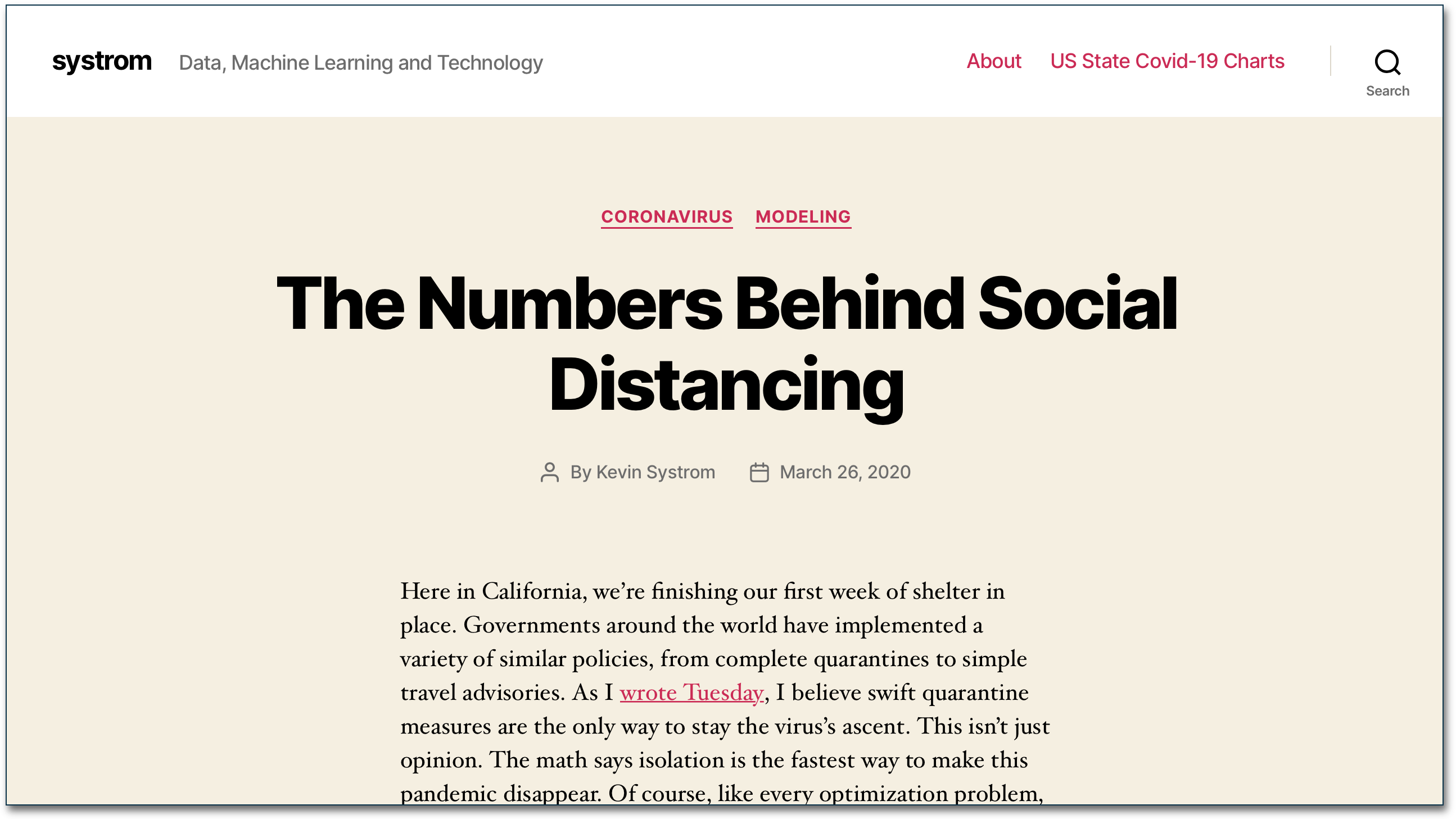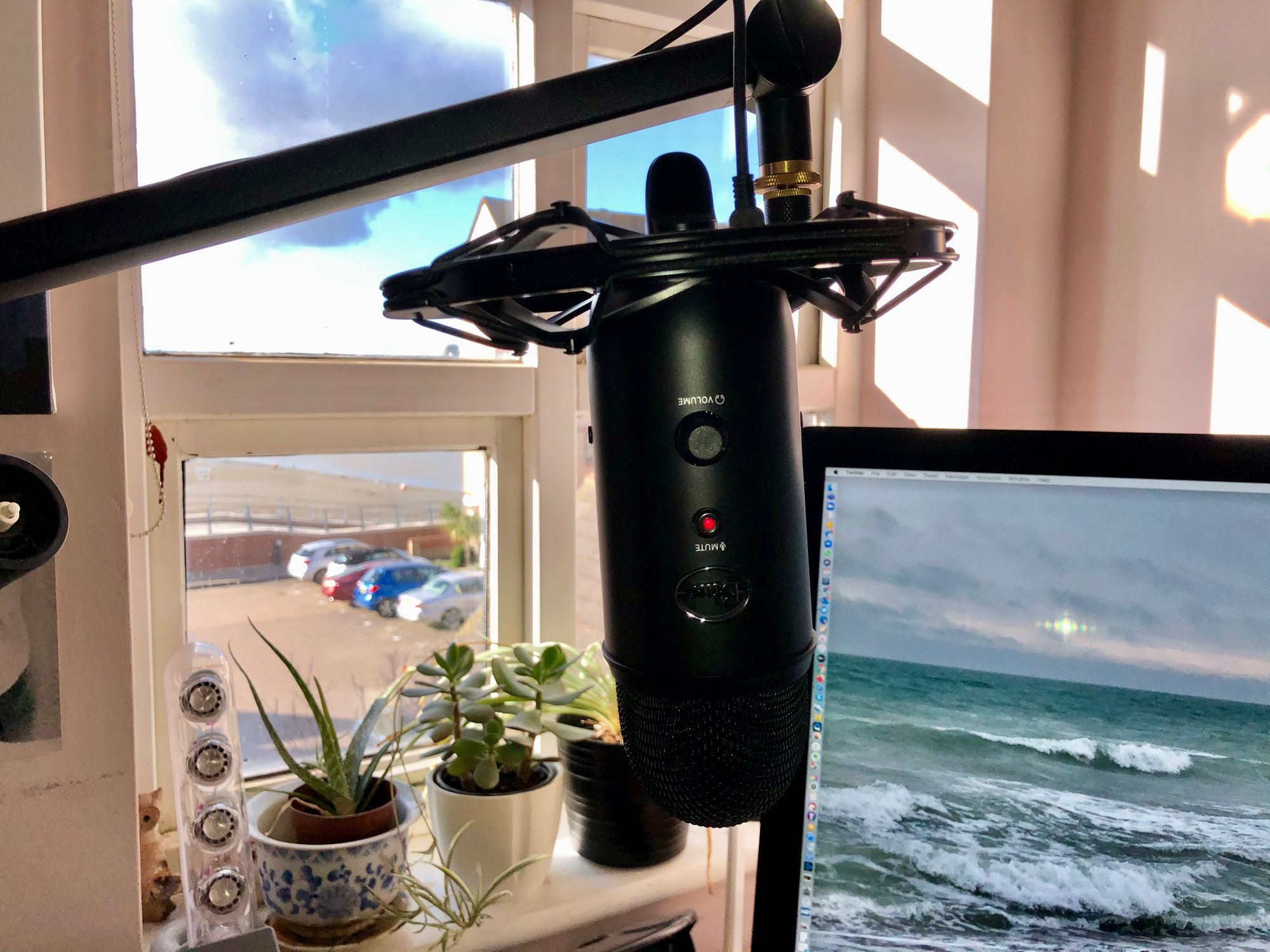
Kevin Systrom’s blog - is all about coronavirus and maths
Instagram's co-founder has remerged with a blog - but he's not writing about what you might expect.
Do your remember Kevin Systrom, one of the co-founders of Instagram? It’s been well over a year since he left Facebook, and he’s re-emerged with a blog at systrom.com.
Really, really long term readers will remember me covering a talk by him back in 2011, before Instagram became the big thing it is now. Like many big founders, he retreated from such public appearances once his product blew up and he sold to Facebook. But, given how present he was in the early days, it’s interesting seeing him emerging back into public discourse again.
And what’s he chosen to blog about?
Photography? Product design and management? Startups? Social networking?
No.
He’s blogging about Coronavirus.
You can’t code out of Covid-19
On one level, this is classic tech “bro” arrogance. He’s not a virologist, epidemiologist or molecular biologist. He doesn’t have any expertise in this space. But he can do maths. And lots of people seem to think that is enough.
For example, his latest piece runs maths on how likely people are to have the disease. Well, fine. Except…well, even the experts in the field say we have no idea how many asymptomatic infections we have. And we’re not likely until we move to a combination of more extensive random testing and, more usefully, an antibody test. Preliminary work in South Korea suggests it could be around 30%.
So, at first glance this looks like exactly the kind of piece that Flattening the curve of armchair epidemiology was written to counter.
Thank God it’s not Medium
On the other hand, at least he didn’t publish it on Medium, and his blog is currently obscure enough that my old pieces about him are ranking higher on searches for “Kevin Systrom Blog” than his own site is. So, this isn’t a big publicity push for him as a great tech savior and insightful commentator.
(He’s not using even https, interestingly. He might rank better if he did…)
And let’s be fair here - he does at least admit to his assumptions right up front:
If you divide the number of active cases in your location by the population in your location you obtain a rough estimate. This is ‘rough’ because most people stay home if they’re sick. However, let’s assume there’s an equally sized group of individuals that are infectious but asymptomatic roaming out there. At the beginning stages of the infection this a reasonable simplification. The beauty of modeling is that you can decide to adjust this number based on your own beliefs if you disagree.
And. actually, that puts him well ahead of the majority of tech people who’ve started writing about this.
Showing your assumptions
In fact, I’d go as far as to say he does a better job of pointing out that modeling is based on a set of assumptions than many journalistic pieces have done so. Those base assumptions are why we see so much difference between the Imperial and Oxford modeling, for example.
This is actually a lesson from good blogging that I think journalism could stand to learn: be clear about the flaws, assumptions and uncertainties present in modeling something as novel as the novel coronavirus. I know people seek certainty is such challenging times - but sometimes it doesn’t pay to give false certainty where none exists.
It's still easy to read Systrom's piece and assume he's talking about facts rather than guessed. But he's not much more guilty of that than many of us have been.
Sign up for e-mail updates
Join the newsletter to receive the latest posts in your inbox.










